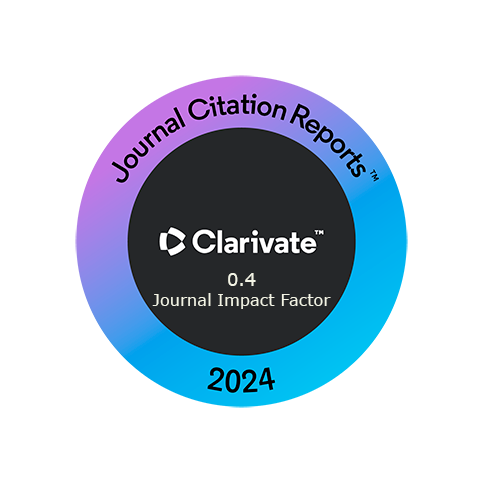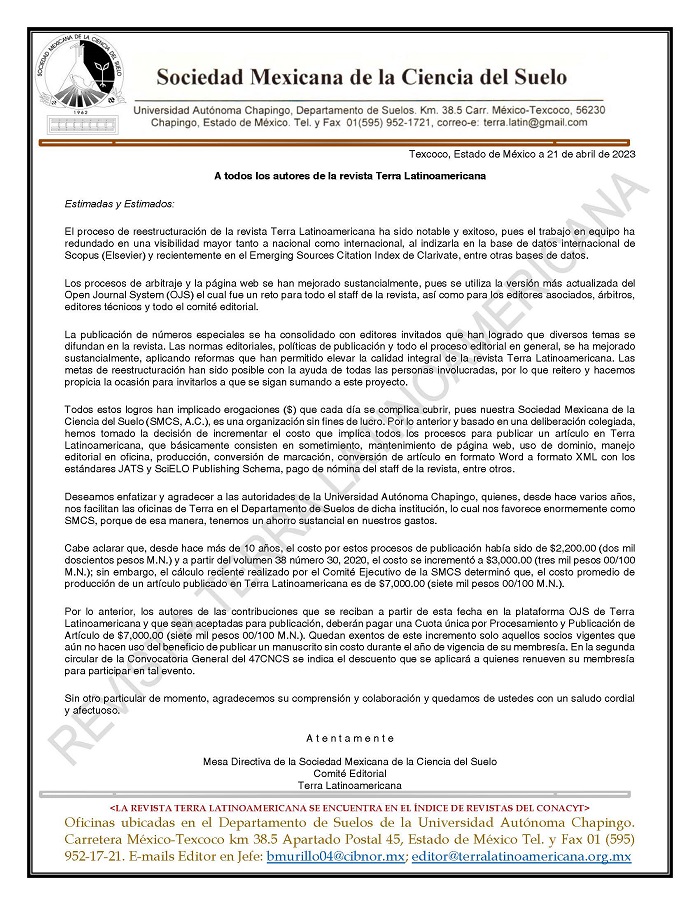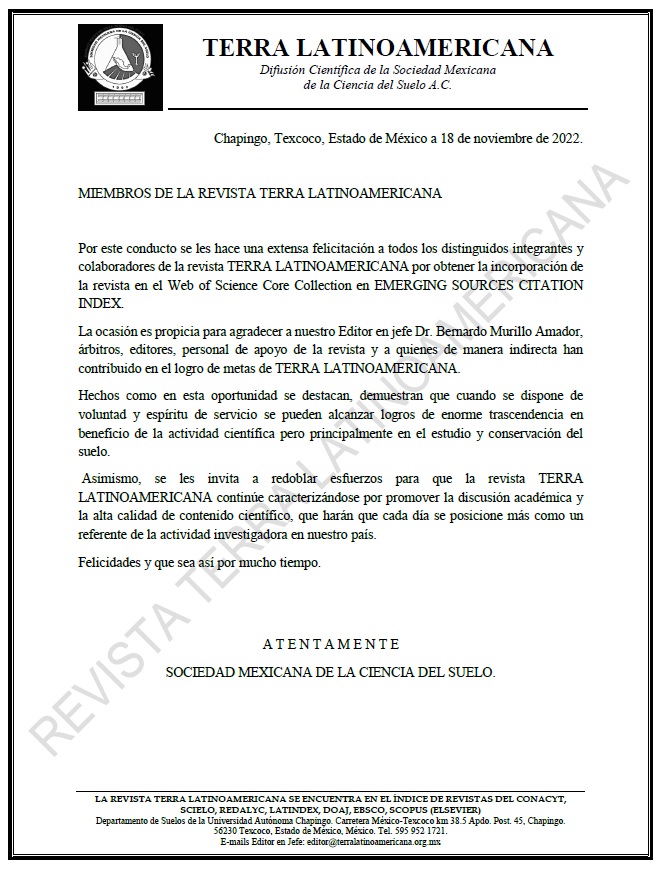Estimation of biomass and aerial cover using radiometry and field level digital imaging of grasslands and scrublands.
DOI:
https://doi.org/10.28940/terra.v35i3.133Keywords:
vegetation cover, IVCP, β, and NDVIcp, digital imaging, radiometric dataAbstract
To analyze the relationship between vegetation reflectances obtained through the use of optical sensors with aerial cover and biomass production, a sampling campaign was carried out in the states of Mexico, Jalisco, Zacatecas, Coahuila, Durango, and Querétaro using multispectral radiometers under field conditions. In addition to radiometric data collection, digital photographs were taken to estimate aerial coverage using supervised classification methods. Approximately 15% of the measurement points were aerial biomass sampling. The relationship of vegetation index (NDVIcp, IVCP and β) to biomass and aerial cover were analyzed with a sampling scheme, establishing a relationship between these biophysical variables. Estimation of the biomass and vegetation cover in a faster way, allows estimating the condition, trend or production of natural vegetation in grasslands and scrublands, making it possible to make management decisions more efficiently and expedite. The model used to obtain biomass production in grassland and scrubland, through radiometric data and vegetation cover, considering that the processed data correspond to the linear phase of the vegetative growth stage, gives very good results for this type of vegetation (R2 = 0.98).Downloads
Publication Facts
Reviewer profiles N/A
Author statements
- Academic society
- Terra Latinoamericana
- Publisher
- Mexican Society of Soil Science, C.A.

















